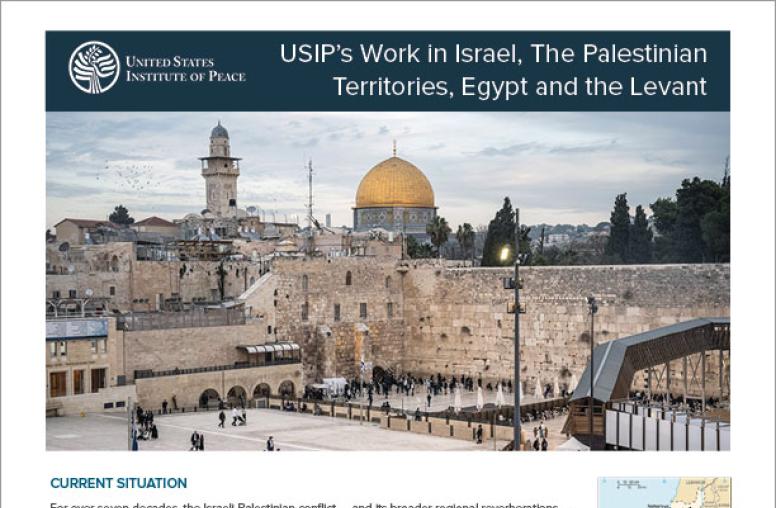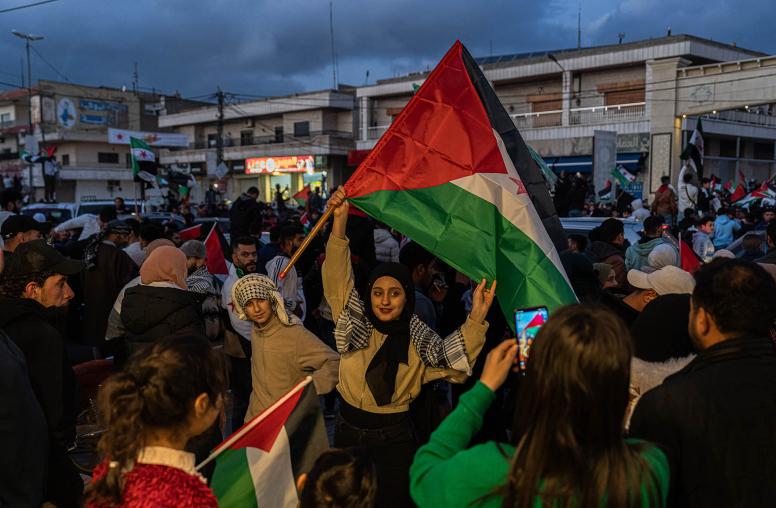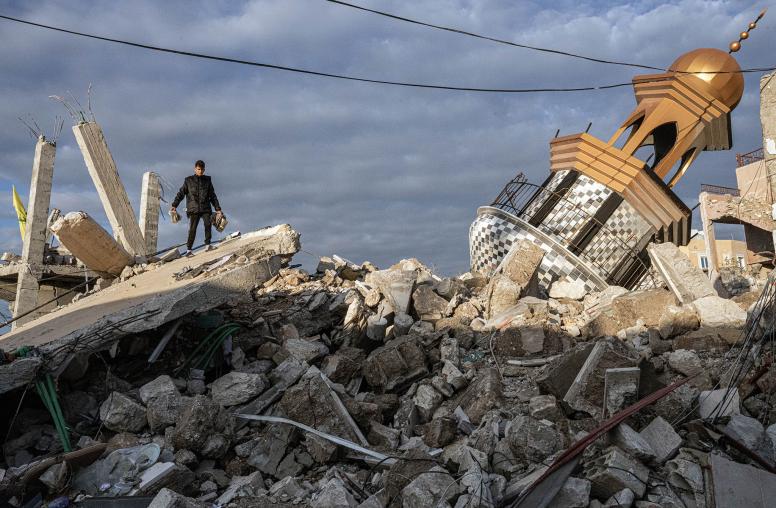As Lebanon Melts Down, Can it Avert Total Collapse?
Financial, governance and COVID challenges are bringing the country to its knees, potentially provoking a new wave of displacement.
Editor’s Note: This article was updated on March 11 to reflect recent developments.
As Lebanon marks the seven-month anniversary of the catastrophic blast at the Beirut port last August 4, the country appears to be in a rapidly accelerating free fall. Lebanon’s currency continues to plummet in value, hitting new lows. With foreign exchange reserves falling, Lebanese officials have raised fresh concerns that the country may soon not be able to import key necessities such as food and fuel. Meanwhile, despite a COVID pandemic surge, angry Lebanese have taken to the streets across the country, protesting the rapidly deteriorating economic and social conditions.

Following eight straight days of protests, the Lebanese army began to dismantle protesters’ roadblocks, but senior security officials including the army chief warn that Lebanon’s overtaxed security forces may be reaching a breaking point. At the same time, efforts to form a new cabinet following the government’s collapse last August remain stalemated, deepening popular resentment. USIP’s Mona Yacoubian looks at where the country is heading in the coming weeks, compares this crisis to others in Lebanon’s history, and discusses what the international community can do to help.
It seems that Lebanon may be at inflection point. Where is the country heading and what can be expected over the coming weeks and months?
Unfortunately, Lebanon is well past an inflection point; it is collapsing in real time. By every indicator, the country is failing:
- Socioeconomic: The World Bank assessed that the Lebanese economy contracted by nearly 20 percent last year, among the highest downturns in the world. The Lebanese lira continues its collapse, plummeting to new lows. Even prior to this latest decline, the lira had lost 80 percent of its value. Foreign exchange reserves continue to dwindle, threatening the government’s ability to import necessities and fund subsidies that are a lifeline for the most vulnerable Lebanese. Lebanon’s currency depreciation is reverberating across the economy and society with devastating impacts. Inflation is surging into triple digits, with significant price increases for food and medicine. Poverty rates are mounting with more than 50 percent of Lebanese living below the poverty line, while nearly a quarter of the Lebanese population is living in extreme poverty. The health sector also threatens to collapse under the enormous strain of COVID as Lebanon has one of the highest infection rates in the region.
- Security: The recent protests mark an ominous turn for Lebanon. Sparked by the latest economic downturn, these demonstrations are far different from the jubilant pro-reform protests in 2019. Propelled by popular desperation and anger, these protests could mark the advent of a longer period of unrest, chaos, even a social explosion across the country as conditions continue to deteriorate. Most concerning, Lebanon’s army chief has warned that the worsening economic crisis now threatens the viability of the security forces—the only functioning institution preventing all-out chaos across the country. Salaries have reportedly plummeted by more than 80 percent and barring personnel or budgeting shifts, funding for salaries could run out by the end of June.
- Governance and accountability: Lebanon is also suffering from poor governance and a gaping lack of public accountability. To date, the country’s three overlapping crises—a financial meltdown, the catastrophic Beirut port explosion and the COVID-19 pandemic—have not been met with an effective government response. On the contrary, years of government corruption and incompetence laid the ground for Lebanon’s accelerating collapse. Despite the growing desperation of everyday Lebanese, no government has been formed since the last government collapsed in the wake of the August 4 explosion. The Beirut port explosion—where improperly stored chemicals served as the immediate trigger—is only the most egregious example of government malfeasance. While the families of the explosion’s victims are demanding accountability, Lebanon’s political class has instead stymied the investigation. Last month, the judge heading the investigation was dismissed when the inquiry led to a number of senior Lebanese officials. Today, the investigation is no closer to determining who was responsible at the highest levels of government, let alone implementing measures to address the need for transparency and government accountability more broadly.
- Freedom of expression: Once noted for its relatively vibrant civil society and freedom of expression, Lebanon is descending into a significant and at times violent crackdown. Last month’s assassination of Lokman Slim, a prominent anti-Hezbollah, Shia activist, signals a particularly dangerous escalation. Many fear his killing could herald a return to political violence and targeted killings. Slim’s assassination comes in an era of narrowing freedoms and increased human rights violations in Lebanon. Thirty-five protesters from Tripoli were recently charged with terrorism, a move many equate with a crackdown on dissent.
Unfortunately, Lebanon has long been associated with crisis and dysfunction. Is this period any different than past crises such as the 1975-1990 civil war? If so, how?
Many observers have become inured to Lebanon’s dysfunction and perpetual sense of crisis, but Lebanon’s current predicament marks a real departure from the past. This is a different Lebanon. Even in the worst days of the civil war, while lacking a government, Lebanese found informal ways to keep the country somewhat functioning. Lebanon was broken, but not in a state of total collapse. A closer parallel might lie in the early 20th century, when Lebanon suffered from pandemic, poverty and widespread hunger.
Today, however, the security implications of total collapse are far graver. Malign actors ranging from Sunni jihadist groups such as al-Qaida and ISIS to Hezbollah, the Shia, Iranian-backed militia, can exploit security vacuums and chaos to their advantage, posing a potentially significant threat to U.S. national security issues.
State collapse in Lebanon could also provoke a new wave of displacement. Lebanon hosts the highest number of refugees per capita in the world, and refugees often are among the most threatened in such crises. At the same time, a growing number of impoverished Lebanese may also seek to escape the turmoil. Should the situation in Lebanon continue to deteriorate, Europe may once again find itself facing the challenge of new refugee flows.
Is there a role for the international community in helping Lebanon to avert total collapse?
Today, the international community faces a rapidly narrowing window of opportunity to engage before Lebanon plunges into total collapse that would necessitate a far more costly and time consuming international effort. While the onus for reform lies on Lebanon’s political class, the emerging humanitarian crisis demands immediate and direct assistance to the Lebanese people. Previous efforts to address the crisis by French President Emmanuel Macron were unsuccessful, however if the United States opted to engage, it could play a catalytic role, bringing together European and Gulf allies as well as the United Nations, World Bank, and the International Monetary Fund.
With U.S. leadership, these key stakeholders could undertake a two-pronged approach to prevent the onset of a humanitarian and security emergency in Lebanon. First, they could seek to increase direct humanitarian assistance to vulnerable Lebanese, ideally through cash assistance programming. Second, they could leverage their collective power to put greater pressure on the Lebanese political class to form a government of independent, reform-minded experts who could set in motion the needed reforms that would unlock a larger rescue package.
In its recently released interim national security strategy, the Biden administration promises to work with allies and partners to confront corruption. Lebanon's impending meltdown stands as one of the most dramatic and grievous examples of corruption and bad governance. It may also be the most urgent crisis to test this new strategy.



